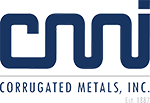Since its introduction in 1993, the U.S. Green Building Council (USGBC) has been promoting sustainability in America’s building industry. Its most well known initiative is the Leadership in Energy and Environmental Design (or LEED) green-building rating system. According to the USGBC website, LEED provides: “a framework that gives project teams the ability to choose solutions that contribute to aggregate environmental progress.”
When it comes to actual building materials, aluminum finds its way into many LEED-rated projects. In 2008, aluminum producers claimed that approximately 85% of domestically produced, flat rolled products for the construction market were made of recycled content. This high level of recyclability is not a surprise when it comes to aluminum. Not only does both post-consumer and post-industrial aluminum contain high percentages of recycled content, but also aluminum itself is 100% recyclable. Other amazing eco-friendly qualities of aluminum include:
- Aluminum from recycled materials requires only around 5% of the energy required to produce aluminum from bauxite ore.
- Using recycled over raw materials to create aluminum reduces air pollution by 95% and water pollution by 97%.
- There is no limit to how many times aluminum can be recycled, so it never loses quality. Therefore, even after it long lifespan, it can be quickly reintroduced into the material stream.
- LEED buildings, many of which feature recycled aluminum, use 25% less energy than the national average, which adds up to $675.26 per employee!
It is clear that the LEED rating system is becoming a critical part of the American construction industry. As more construction professionals discover the benefits of LEED-rated buildings, the more it becomes clear just how eco-friendly and versatile aluminum can be.

